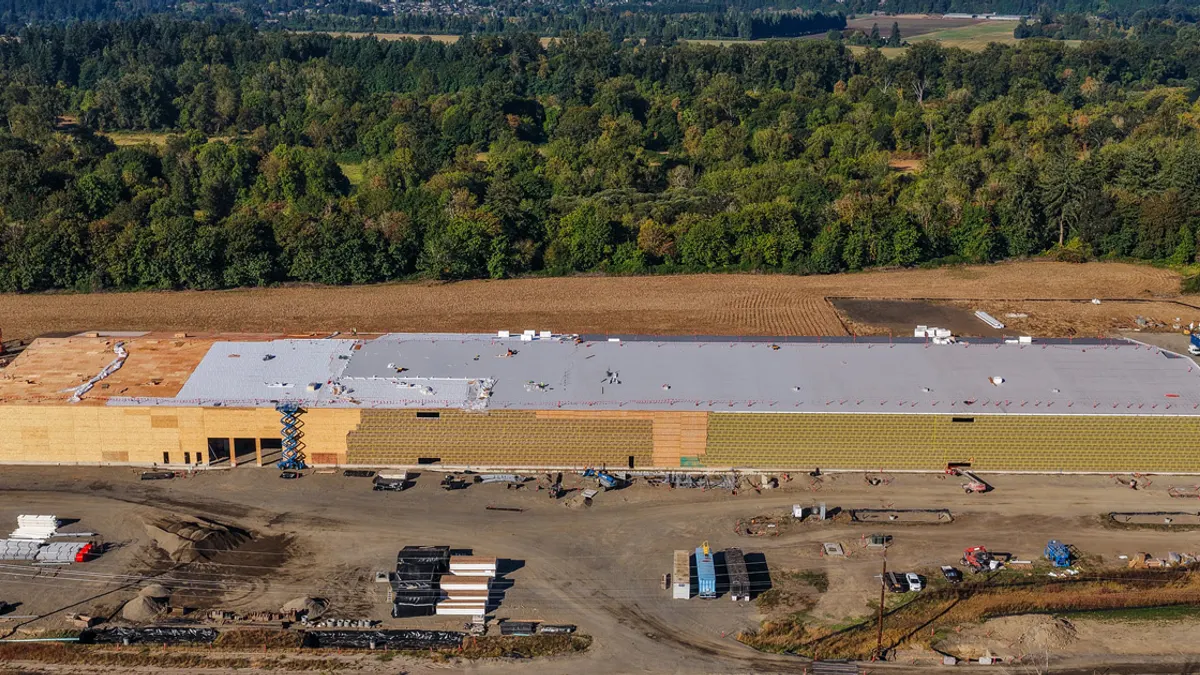The construction industry was slow to warm to social media, with many firms tiptoeing their way in reluctantly. Fast forward a few years and social media has become as essential as a website: If you’re not participating, you’re missing out.
“It’s definitely a necessity,” said Ali Peters, account manager at Philadelphia-based Group Two Advertising, which manages social media marketing for builders and remodelers. “It’s really a good communication tool for builders beyond their website. It’s a way to capture people where they’re already living and socializing.”
“It’s becoming more and more critical,” said Robin Burrill, CEO of Curb Appeal Renovations, in Keller, TX. “Almost all our ‘cold’ leads come from some type of social media or internet search.”
What’s also changed is that many building pros aren’t on social media just to be on it — they’re leveraging engagement and the two-way conversation it offers to bring in leads and connect directly with potential and existing customers. And that’s a good thing, since most of today’s popular social media platforms — Facebook, in particular — favor engagement. And the more engagement you have, the more likely your posts will be seen by your followers and beyond.
Here are a few ways builders and remodelers are increasing engagement on two popular, visual-oriented social media platforms — Facebook and Instagram — to help build their brand and expand their business.
Inject your personality
“The personality of posts should reflect that of the company and/or owner(s),” said Neil Parsons, CEO of Design Build Pros, in Red Bank, NJ. “We make sure to mix our projects and articles with industry information and then sprinkle in some light things that will make people smile or laugh.”
He also blends business with personal, sharing about one-quarter of his company’s posts to his own Facebook page. His friends and family then engage with the content, giving it a further boost back on the company page.
Iris Davis-Quick, marketing manager for CG&S Design-Build, follows a similar path. “It’s a really great way to show we are actual humans,” she said. She often posts snapshots of the staff (and the occasional dog) and isn’t afraid to inject some humor: if the company’s design director is jamming out at his desk, it’s going up on Facebook.
TRG Home Concepts, a builder in Medford, NJ, takes a different approach on Instagram, adding personal insights and perspectives on different elements of a project, such as a finish detail or an in-process shot, as they did here and here.
Make project photos more engaging
Project photos are a staple on most social platforms. Beyond Houzz, where libraries of images are the bread-and-butter, too many straight-off project images on Facebook or Instagram might get stale and seem monotonous to the followers of your page whose feed these images appear in. Using those images to engage with followers is key.
Parsons uses project photos to start a conversation. For example, he may post images of four different kitchens and ask followers to share opinions on stained versus painted cabinetry. “What we’re doing is asking a question that will solicit an answer, but we’re also showcasing our work. [It’s an alternative to just saying] ‘Look at the work that we do,’” he said.
“Our before/after posts get many more views but not a lot of comments,” Burrill said. “When we post pictures of the crew [or] our dogs that brings lots of comments. Also, showing pics of what we uncover on a job brings lots of comments [and] engagement.”
Calling out a specific feature to demonstrate what separates your company from the others is another way to offer readers insights into what they’re seeing on-screen. For example, when posting images of a recent kitchen project, Nuance Design Build Remodel in Sterling, VA, used a cutaway image to call out a unique detail in the cooktop and cabinetry.
TRG uses images with different perspectives, angles and zooms to catch the social scroller’s eye, as seen here on Instagram. The company generated more than 1,000 likes on this Instagram post by spotlighting a problem-solving detail.
Group Two applies this tactic to cross-platform campaigns, as well. Client Wayne Homes, which operates in Indiana, Michigan, Ohio, Pennsylvania and West Virginia, shares digital photo albums from its open houses on Facebook. The albums highlight customization options available for different floor plans and what current homeowners are doing with them. The company also posts a couple of those photos to Instagram with a link back to the full album on Facebook.
Leverage video
Facebook, for one, heavily favors video content in the algorithms it uses to determine what content appears in users’ feeds. Andy Bergren, senior account manager for Group Two, says videos get significantly more engagement on Facebook than other types of posts among his clients.
The agency’s clients use video in a variety of ways, including model walk-throughs and construction updates. The agency also believes in the power of short client video testimonials, posted to Facebook. “Buyers are really valuing the opinions of people who have used the builder or remodeler,” Peters said.
The agency has recently started using Facebook Live, which allow its builder and remodeler clients to present in real-time to followers and for viewers to comment and ask questions right away. Some of Group Two’s clients, such as Re-Bath & More, in Lancaster, PA, use Facebook Live to host weekly or monthly live shows where company leaders deliver expertise on a given topic.
Write your own content
Creating your own articles provides more content to post on social media while positioning your company and its leadership as a resource.
Design Build Pros keeps a blog that is regularly updated and covers topics from cabinet trends to sharing insights from other remodelers. Teasing a blog post on Facebook can help drive traffic back to your website.
Coming up with topics to write about can be the biggest challenge. However, the business of the day can be the most compelling information a company can share. “I find that in regular home life or life with a client on the job site, something will come up that will make interesting content,” Parsons said.
For example, a client recently asked Parsons in person: “What should we do to finish over the top of the window? A valance, crown, light box … nothing?” Parsons says he will soon turn that conversation into a blog post with pictures and examples from his company’s work that others can learn from.
Pay to play
Like it or not, you get more out of Facebook if you spend a little money now and then. A small spend through Facebook Ads can go a long way. If you have an important blog post or a project that you really want to show off, simply “boosting” that post — essentially paying for it to be shown to more users — for $30 to $60 is one way to improve engagement.
Those posts can be targeted to reach users based on demographics such as gender, age, geography and interests, ensuring you’re getting a more qualified bang for your buck.
“It’s one of the lowest cost-per-leads, and if you’re not on it, you’re behind,” Bergren said. The sales funnel resource, he said, allows businesses to place an ad to reach a qualified, targeted buyer and drive them to their website for more information.
Always measure
Facebook and Instagram algorithms are continually in flux, so it’s important to monitor indicators — both the built-in insights provided by the platforms and those within your website — to ensure that what you’re doing is working and what approaches may no longer be effective.
For example, through monitoring and measurement, Parsons determined that three jobs originating from Facebook in 2015 amounted to $250,000 in business. As such, the company upped its social spending budget, which funds advertisements, boosted Facebook posts and stock imagery purchases, the following year. “It’s definitely something to do for brand recognition, getting your name out, and converting it to actual business,” he said.
Group Two monitors social media engagement by integrating those platforms into the client’s website CRM. This allows them to know which platforms are driving traffic to their sites as well what happens after they arrive there. For example, if someone clicks on a lead-generation advertisement on Facebook, Group Two can track what that potential customer does next — such as filling out the website’s contact form to request more information or reading more about the company’s services — eventually helping them identify how a Facebook ad spend directly translated into revenue.
Still, every company is different and returns on investments in social media advertising aren’t likely to happen overnight. “I don’t think there’s a consensus by the builders and remodelers as to what is right,” said Shawn Draper, owner of marketing agency Draper DNA. “Social media isn’t always fast. Building communities and being a trusted part of those communities is not a fast process.”





















